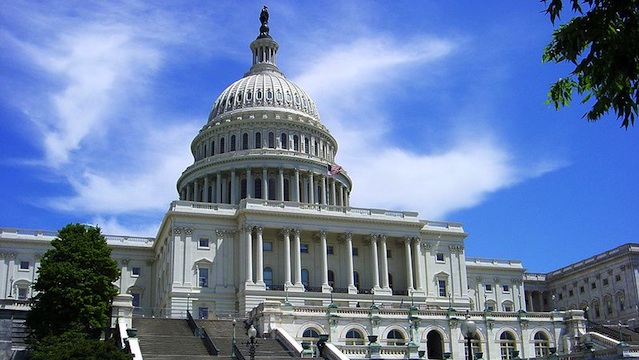Was LA (not NYC) the Post-WWII Art Capitol of the World?

Crack open any standard text on modern art since the end of World War II and you’ll read how New York City took over as the art world capitol from Paris. From the rise of the MoMA and the Guggenheim to the emergence of Abstract Expressionism, Pop Art, and pretty much every other modern movement, if it happened in art, it happened in New York City. But is that the true story? Starting next month and extending throughout 2012, Los Angeles hopes to rewrite the history books and wrest the title away from its East Coast Rival through an organized effort titled Pacific Standard Time that brings together more than 60 cultural institutions and more than 50 art exhibitions. Just when you thought you knew modern art history, Pacific Standard Time shakes up all your assumptions like a seven-point quake.
The idea for Pacific Standard Time began a decade ago at the Getty Research Institute as an oral history project. As the researchers began talking to artists, gallery owners, and other figures from the era, they realized just how much ammunition they had at hand in the battle with New York. The Getty Foundation soon began awarding grants to museums and other cultural institutions to dig into their archives and collections—first as part of the history project, then as the groundwork for the exhibitions that will appear over the next year throughout the Southern California region.
We all know what New York City has to offer as top of the heap of the post-war art world: Jackson Pollock, Willem de Kooning, Andy Warhol, and others. But does that star-studded lineup reflect the full spectrum of post-war art and post-war American culture? For me, the strength of Pacific Standard Time’s argument lies in how it represents segments of the population and their art in a way that the standard New York story doesn’t. In contrast to the Old Boys Club of the New York AbExes, Los Angeles offers a vibrant feminist art scene with a long history. Doin’ It in Public: Feminism and Art at the Woman’s Building recalls the feminist landmark the Woman’s Building, founded in 1973 in L.A. by artists Judy Chicago and Sheila Levant de Bretteville and art historian Arlene Raven. She Accepts the Proposition: Women Gallerists and the Redefinition of Art in Los Angeles, 1967-1978 examines the role of women art dealers in promoting the art of women. Exhibitions focusing on African-American, Mexican-American, Japanese-American, Chinese-American, and Chicano artists demonstrate and celebrate the diversity within the L.A. art scene while arguing for a truly global scope that New York City, for all the diversity of its population, can’t match in its post-war art history.
But even if New York wants to go toe-to-toe with Los Angeles in regards to Abstract Expressionism, the City of Angels can hold its own. In L.A. Raw: Abject Expressionism in Los Angeles, 1945-1980, From Rico Lebrun to Paul McCarthy at the Pasadena Museum of California Art, artists such as Wallace Berman, Chris Burden, Judy Chicago, and Betye Saar, in addition to the title’s bookends Rico Lebrun and Paul McCarthy, make a compelling argument that their collective achievement matches that of their opposite coast counterparts. Perhaps no single artist holds up to stars such as Pollock or de Kooning, but artists such as Hans Burkhardt, who worked in the New York scene when AbEx was in its infancy before bringing such ideas west with him in 1937, offer a different spin on and expand our concept of the potential of the familiar style. In My Lai (shown above), painted in the same year as the infamous Vietnam War massacre, Burkhardt uses the passion and fury of Abstract Expressionism to express outrage with abstract swirls of paint in which skulls seems to swim with the concrete reality of death. In contrast to the apoliticism of Pollock and de Kooning, the political engagement of Burkhardt and others reminds us that these artists worked in real time and space and not some hermetically sealed bubble.
Even if you don’t buy the premise of Pacific Standard Time, you have to admire the massive accomplishment in bringing so many institutions together in a common goal. (The website alone is a seemingly endless treasure trove of information.) “I don’t think this level of collaboration could have happened in the East, where there is so much competition between museums,” Judy Chicago remarked in an interview about the project. “There’s a spirit of innovation and self-invention that continues in California.” They may not rewrite the history books and supplant New York City as the post-war capitol of the art world, but the organizers of Pacific Standard Time will succeed in bringing the “California State of Mind” of diversity and creativity to the minds of a whole new generation.
[Image:My Lai, 1968, Hans Burkhardt. Oil assemblage with skulls on canvas. 77 x 115 in. Jack Rutberg Fine Arts, Los Angeles. © Hans G and Thordis W. Burkhardt Foundation. Part of L.A. Raw: Abject Expressionism in Los Angeles, 1945-1980, From Rico Lebrun to Paul McCarthy at the Pasadena Museum of California Art from January 22, 2012 through May 20, 2012.]





